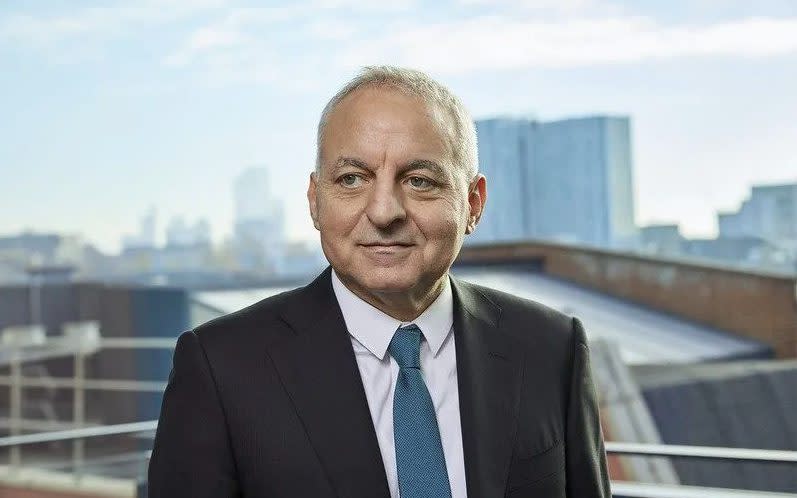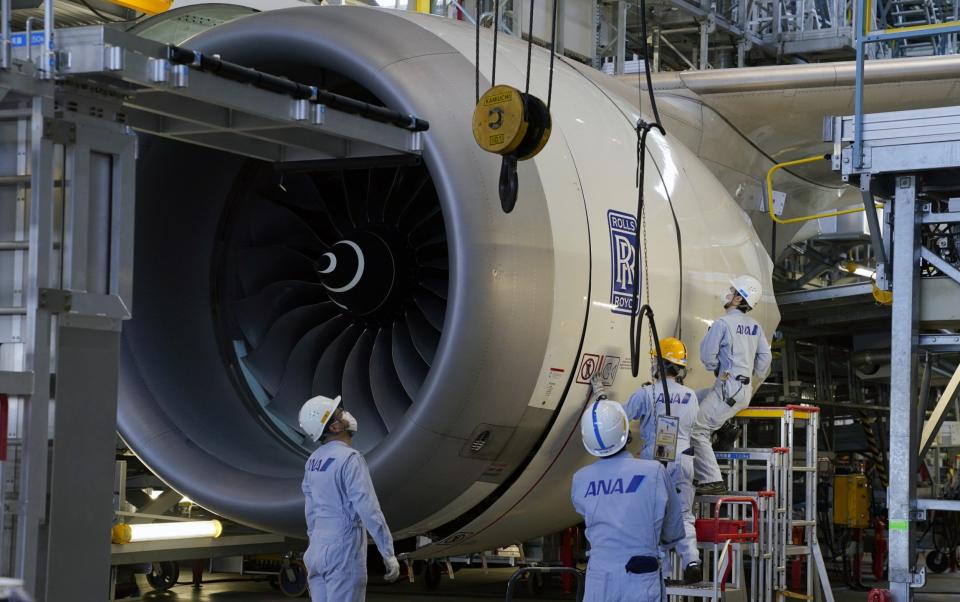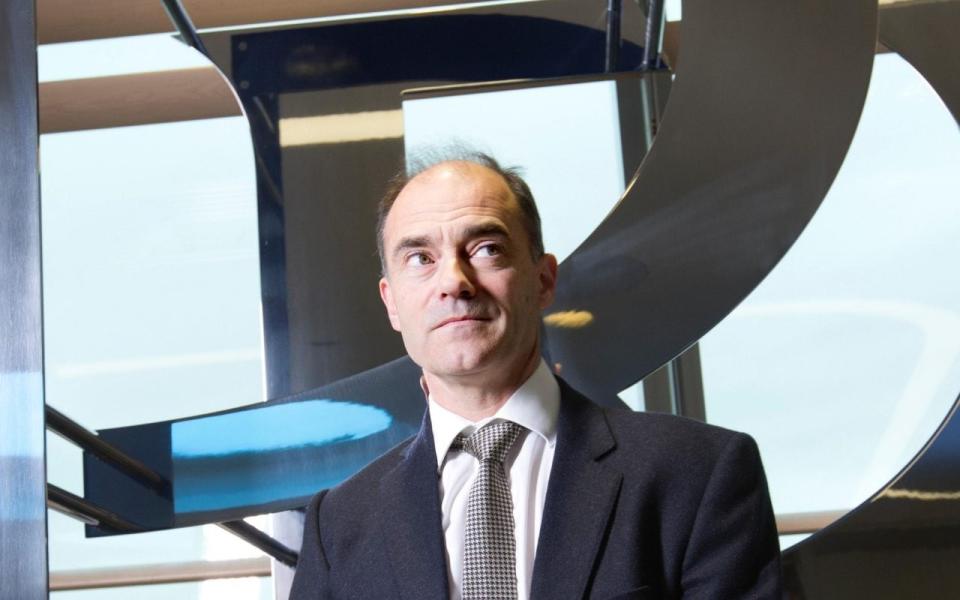The ‘ruthless’ axeman carving out a new future for Rolls-Royce

Long before green energy became de rigueur, Rolls-Royce was exploring how to generate clean power.
The engineering giant said it had reached a “significant milestone” in 2011 after successfully generating electricity from the tides. Rolls-Royce had installed a huge turbine 100ft beneath the sea near Orkney that would harness tidal power to feed the Scottish grid.
Yet shortly after the trial, the project was abandoned. It is one of many ideas that Britain’s premier engineer has tried and dropped over the years in a search for the next big thing that could transform its fortunes.
This era of experimentation now looks like it’s over. New chief executive Tufan Erginbilgic has been far more interested in shutting things down than starting them up since taking charge in January.
He has vowed to shut the company’s R2 Factory, which was set up to sell Rolls-Royce’s in-house artificial intelligence software. A Rolls-Royce direct air carbon capture project, which aimed to remove existing CO2 from the atmosphere, will also be wound down.
Rolls-Royce’s direct air carbon capture project, which aimed to remove existing CO2 from the atmosphere, will also be wound down.
Erginbilgic, who spent 20 years at BP before taking charge of Rolls-Royce, has been alarmed at the state of the business.
He called Rolls-Royce a “burning platform” when he took over, telling employees: “Every investment we make, we destroy value.”
In a recent interview with the Financial Times, Erginbilgic said Rolls-Royce’s power business, which makes diesel-burning engines for ships and generators, had been “grossly mismanaged”.
A full strategy update is expected later in the year, with more cuts expected.

Erginbilgic argues he is giving the company the tough medicine needed to turn around the business.
“Rolls-Royce has not been performing for a long, long time, it has nothing to do with Covid, let’s be very clear,” he told staff shortly after taking charge. “Given everything I know talking to investors, this is our last chance.”
Yet some believe the axeman at Rolls-Royce is going too far too fast. Erginbilgic was forced to defend his comments about the business at the company’s recent shareholder meeting, amid accusations he was making “extremely destabilising” remarks.
“That probably would not be my choice of language,” former Rolls-Royce chief Warren East says of the “burning platform” comments.
Rolls-Royce is synonymous with victorious British engineering, conjuring visions of the Merlin engines that powered Spitfire fighter planes and Lancaster bombers during the Second World War.

Today, its largest business is making large jet engines for civil aircraft. It also makes diesel engines for ships and generators, engines for warplanes, and nuclear power plants for submarines.
It is developing electric powertrains for air taxis and other light aircraft as it prepares for the shift to net zero.
The company is one of three Western manufacturers of large engines for passenger jets, the others being US engineers General Electric and Pratt & Whitney.
However, it is far smaller than its rivals. GE, which makes everything from wind turbines to nuclear power plants, is worth $110bn (£90bn). Pratt & Whitney is owned by missile and satellite maker Raytheon, which is worth $135bn. Rolls-Royce is worth just £12bn.
The British company is best understood as a challenger, argues East.
A former microchip executive who took the helm at Rolls-Royce in 2015, East spent much of his time in charge fighting fires.
During his tenure he had to deal with: production problems dogging the company’s Trent 1000 engine, which powers the Boeing Dreamliner jet; a settlement with the Serious Fraud Office over historic bribery and corruption allegations; and the pandemic, which cost the company £8bn.
Covid-19 dealt a huge blow to the company as planes using its engines were grounded. Rolls-Royce was forced to cut 9,000 jobs in 2020 and raised £5bn to shore up its balance sheet.
The succession of crises meant East had little time to address more fundamental issues.
East is sanguine about his successor’s strategy. Erginbilgic is “doing stuff, which, frankly, I would probably be doing if I was still running Rolls-Royce”, he says.
“He’s carving out his own agenda,” East says, adding: “You have to be a little bit ruthless about these things.”

Unlike its rivals, Rolls-Royce only makes the largest engines for long-haul travel rather than the smaller engines that power the short-haul workhorse planes that fly around Europe or within North America.
This has left the company struggling to recover from the impact of the pandemic. Short-haul trips have rebounded much more quickly than long-haul.
Rolls-Royce lost £1.5bn last year, though it eked out a small operating profit.
Erginbilgic argues his cuts are part of a very long process of making the company a sustainably profitable enterprise.
Nick Cunningham, an aviation analyst at Agency Partners, says: “Rolls’s core business is making Aero Engines and diesels, that's what it does.
“You don't want to be doing anything which detracts from that – attempts at pure diversification almost never work.”
While some investors have been disgruntled with Erginbilgic’s communication style, few are arguing with the new chief’s results.
Shares are up almost 50pc so far this year, including a 24pc one-day jump in February after Rolls-Royce unveiled its better-than-expected annual results.
The next business that could face the chop could be Rolls-Royce’s Small Modular Reactor (SMR) business, speculates Cunningham.
The company is racing to develop an electricity generating reactor that can be factory-made but it is up against more than a dozen competitors.
Rolls-Royce has repeatedly said it is reliant on the state to place the first SMR order to kick-start the business. However, the UK government has so far dragged its feet and recently opened an international tender process.
“Frankly, it's going to take a decade or more to get a working nuclear power station, if it gets funded and ordered,” says Cunningham, “and it will inevitably get more expensive than you expected, they always do. And meanwhile, renewables are still getting cheaper.”
Rolls could choose to license the technology out instead. The margins would be smaller but this strategy would free up more resources for the bigger challenge of decarbonising its engines.
Erginbilgic’s “priority number one” must be the nuts and bolts of Rolls-Royce’s business, says Cunningham. Namely: selling jet engines and developing clean propulsion. That means costly side bets must be abandoned.
The tidal power project is a prime example of the type of experiment that Rolls-Royce will no longer indulge. It was shut down before East joined Rolls-Royce, but his team did briefly revisit the idea, he says.
Ultimately, they concluded that the product “just didn't make economic sense”.
“It’d be lovely if lots of these things did but you know, it's a business,” he says.

 Yahoo Finance
Yahoo Finance 